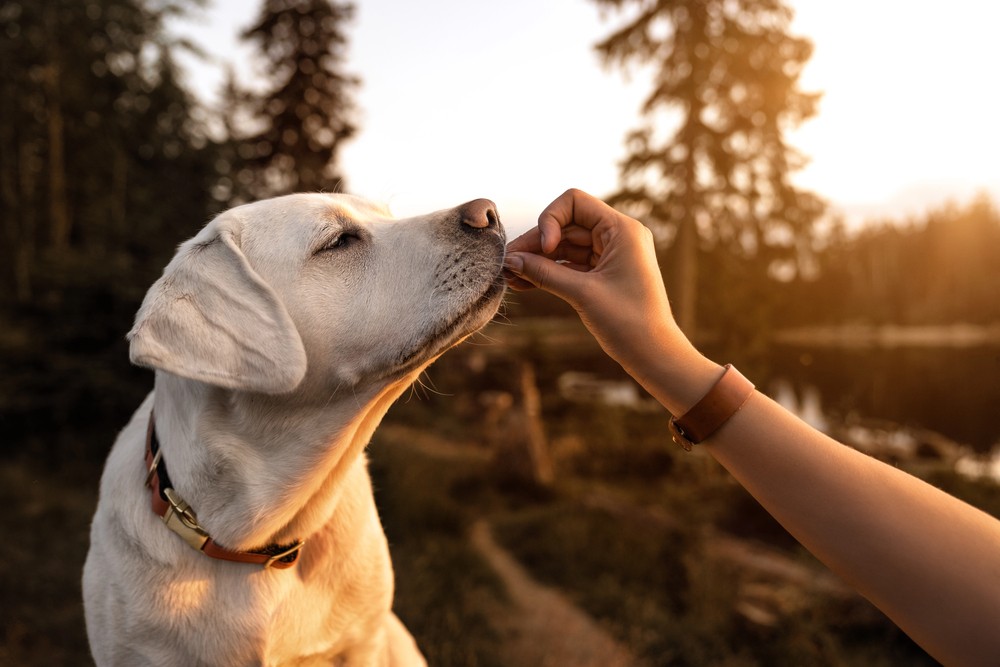Design Your Training Session for Success
Effective dog training techniques for success are all about building your dog's confidence through small victories. When your dog experiences consistent success, they become more motivated, eager to learn, and confident. Achieving these small wins makes training feel rewarding for both you and your dog. Our goal should always be to train in a way that sets our dogs up for success and ensures they know how to "win" during each session.
While perfection isn't always possible, rehearsing correct behaviors as often as we can is key to developing a solid foundation. By learning to read your dog's abilities and responding to them, you can ensure each training session is a productive one.
Reading Your Dog's Cues
- Can they focus on eating?
- Can they hear reward markers?
- Are they offering attention?
- Are they performing quality behaviors?
Answering these questions will help you tailor the session to your dog's current state of mind, allowing you to challenge them in a way that fosters success. It's important to push your dog's abilities without overwhelming them, ensuring they can trust you to guide them through the process without stress.
Adjusting Your Training Plan
Not every day will go according to plan, and your dog may occasionally struggle with tasks they usually perform well. When this happens, don't hesitate to adjust the training session. It's always better to pause, reassess, or even end early than to push your dog to the point of frustration. It's okay to quit if the session isn't going well! Flexibility in your training plan is one of the most important effective dog training techniques for success.
Setting Up for Success
Here are a few key tips to ensure that each training session sets your dog up for success:
1. Be Realistic
Always start by asking yourself: "Can my dog do this today?" If you're uncertain, begin with an easier task and gauge your dog's response.
2. Minimize Distractions
When teaching new behaviors, choose a low-distraction environment where your dog can focus without interruptions. The familiar spaces you usually train in work best for this.
3. Keep Sessions Short
Short and focused sessions are vital for success. Set a timer or count out a set number of treats to prevent overtraining. Brief sessions keep your dog engaged and excited to learn.
4. Break Down Behaviors
One of the most effective dog training techniques for success is breaking down behaviors into small, manageable steps. This allows your dog to grasp new concepts without feeling overwhelmed.
5. Use Appropriate Treats
Choose treats that match the challenge level. Higher-value treats should be used for more complex tasks or environments with distractions, while lower-value treats can be reserved for simpler exercises.
6. Maintain Clear Communication
Consistency in reward markers and clear communication helps your dog understand what you expect. Focus on clean training practices that reduce frustration and keep your dog on track.
Training New Behaviors
When introducing new behaviors, it's important to follow a methodical process. Using these effective dog training techniques for success ensures that your dog learns efficiently and with minimal stress:
1. Start in a Familiar Environment
Begin teaching new behaviors in an environment where your dog feels comfortable and there are few distractions. As your dog masters the behavior, slowly increase the level of difficulty by introducing new environments.
2. Fade Prompts and Reinforcement
As your dog improves, gradually reduce prompts and reinforcement, so they don't rely on treats for every rep.
3. Increase Difficulty Gradually
Add distractions and challenges slowly to avoid overwhelming your dog. Always observe their behavior—if they seem stressed or uncertain, adjust the training accordingly.
4. Chain Behaviors Together
Once your dog has learned a behavior, you can begin chaining it with other known behaviors. This keeps your dog engaged and helps them focus on performing multiple tasks in different environments.
Using effective dog training techniques for success ensures that each session builds your dog's confidence and helps them master new behaviors. By setting your dog up for success, providing clear communication, and adjusting your training as needed, you'll help them develop new skills quickly and positively. Remember, every small victory is a step toward achieving long-term success in your dog's training journey.
By accepting you will be accessing a service provided by a third-party external to https://www.fenzidogsportsacademy.com/
